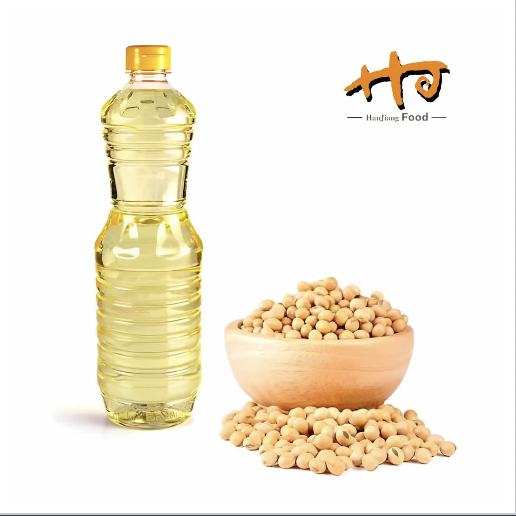Why Is Soybean Oil the Ideal Choice for Frying?
When it comes to frying—whether for crispy fries, golden chicken, or crunchy snacks—choosing the right oil matters. Soybean oil stands out as a top pick for home cooks and restaurants alike, thanks to its unique properties that make frying easier, more efficient, and even healthier. From its high smoke point to its neutral flavor, soybean oil checks all the boxes for successful frying. Let’s break down why soybean oil is the ideal choice for this cooking method.
1. High Smoke Point: Handles High Heat Without Burning
Frying requires oil to reach high temperatures—usually between 350°F and 375°F (175°C to 190°C). If the oil gets too hot, it reaches its "smoke point"—the temperature where it starts to burn, smoke, and break down. Burnt oil ruins the food’s flavor, creates harmful compounds, and leaves a bitter taste.
Soybean oil has a high smoke point, typically around 450°F (232°C), which is well above the temperatures needed for most frying tasks. This means:
- It can handle prolonged frying sessions (like frying multiple batches of fries) without smoking.
- It won’t break down quickly, so the oil stays stable longer, reducing the need for frequent oil changes.
- Food cooks evenly without absorbing burnt flavors.
Compare this to oils with lower smoke points, like olive oil (375°F) or butter (350°F), which can burn easily during frying. Soybean oil’s ability to withstand high heat makes it a reliable choice for both home and commercial kitchens.
2. Neutral Flavor: Lets Food Shine
One of the best things about soybean oil is its mild, neutral taste. Unlike oils with strong flavors (like sesame oil or coconut oil), soybean oil doesn’t overpower the food’s natural taste. This is a huge advantage for frying, where you want the focus to be on the food—whether it’s the seasoning on chicken tenders, the crunch of onion rings, or the subtle flavor of tempura.
- Versatility: Soybean oil works with all types of fried foods, from savory (fries, fish) to sweet (donuts, churros). Its neutrality ensures it complements, rather than competes with, spices, marinades, or glazes.
- Consistency: When frying in soybean oil, every batch tastes the same, as the oil doesn’t add its own flavor. This is why restaurants, which need consistent results, often rely on soybean oil.
For example, frying fish in soybean oil lets the fish’s freshness and seasoning stand out, whereas frying in a strong-tasting oil might mask those flavors.
3. Light Texture: Creates Crispy, Not Greasy, Results
Soybean oil is relatively light and has a thin consistency, which affects how food turns out after frying. When food is submerged in soybean oil, it forms a crispy outer layer without absorbing too much oil. This means:
- Food stays crunchy longer, instead of getting soggy quickly.
- Less oil is retained in the food, making it lighter and less greasy.
Heavier oils, like palm oil or lard, can leave food feeling thick and greasy. Soybean oil’s light texture helps create that desirable "crispy on the outside, tender on the inside" quality that makes fried food so enjoyable.
4. Cost-Effective: Affordable for Large-Scale Frying
Soybean oil is one of the most affordable cooking oils available, especially when bought in bulk. This makes it a favorite for restaurants, fast-food chains, and anyone frying large quantities of food regularly.
- Bulk pricing: Soybean oil is widely produced, so it’s cheaper per liter than specialty oils like avocado or peanut oil. For a restaurant frying hundreds of pounds of fries daily, this saves significant money over time.
- Reusability: Thanks to its high smoke point, soybean oil can be reused multiple times (after filtering out food particles) before needing to be replaced. This further reduces costs, as less oil is wasted.
Home cooks also benefit—soybean oil offers great performance without breaking the bank, making it accessible for everyday frying.

5. Nutritional Profile: A Better Option Than Some Fats
While frying is never the healthiest cooking method, choosing the right oil can make a difference. Soybean oil has a more balanced nutritional profile compared to some other frying oils:
- Heart-healthy fats: It’s high in polyunsaturated fats (like omega-6 fatty acids) and low in saturated fats. Saturated fats, found in lard or coconut oil, can raise cholesterol levels when consumed in excess.
- Fortified options: Many brands of soybean oil are fortified with vitamin E, an antioxidant that helps protect cells from damage.
It’s important to note that all fried foods are high in calories, but using soybean oil reduces the intake of harmful fats compared to oils high in saturated fats.
6. Long Shelf Life: Stays Fresh Longer
Soybean oil has a long shelf life, especially when stored properly (in a cool, dark place). It resists oxidation (spoilage from exposure to air) better than some other oils, which means it stays fresh for months. This is useful for home cooks who don’t fry every day—you can keep a bottle of soybean oil in the pantry without worrying about it going rancid quickly.
For restaurants, this long shelf life reduces waste, as large containers of soybean oil can be used up before they spoil.
FAQ
Is soybean oil good for deep frying?
Yes, it’s excellent for deep frying. Its high smoke point and stability make it ideal for submerging food in hot oil for extended periods.
Can I reuse soybean oil after frying?
Yes. Let the oil cool, strain out food particles (using a fine sieve), and store it in a sealed container. It can be reused 3–4 times for similar foods (e.g., frying fries after frying chicken).
Does soybean oil make food greasy?
No, its light texture means food absorbs less oil, resulting in crispy, not greasy, results.
Is soybean oil better than canola oil for frying?
Both are good, but soybean oil has a slightly higher smoke point (450°F vs. 400°F for canola), making it better for prolonged frying. Canola oil has a similar neutral flavor.
Is soybean oil suitable for frying sweet foods like donuts?
Yes, its neutral flavor won’t clash with sweet glazes or powdered sugar, making it perfect for frying donuts, churros, or funnel cakes.
Does soybean oil contain trans fats?
Most commercial soybean oil is refined to remove trans fats, so it’s low in trans fats (less than 0.5g per serving). Always check the label to be sure.
Why do restaurants use soybean oil for frying?
It’s affordable, has a high smoke point, neutral flavor, and works well for large-scale frying—all key for restaurants needing consistent, cost-effective results.
Table of Contents
- Why Is Soybean Oil the Ideal Choice for Frying?
- 1. High Smoke Point: Handles High Heat Without Burning
- 2. Neutral Flavor: Lets Food Shine
- 3. Light Texture: Creates Crispy, Not Greasy, Results
- 4. Cost-Effective: Affordable for Large-Scale Frying
- 5. Nutritional Profile: A Better Option Than Some Fats
- 6. Long Shelf Life: Stays Fresh Longer
-
FAQ
- Is soybean oil good for deep frying?
- Can I reuse soybean oil after frying?
- Does soybean oil make food greasy?
- Is soybean oil better than canola oil for frying?
- Is soybean oil suitable for frying sweet foods like donuts?
- Does soybean oil contain trans fats?
- Why do restaurants use soybean oil for frying?

 EN
EN
 DA
DA
 AR
AR
 NL
NL
 FI
FI
 FR
FR
 DE
DE
 EL
EL
 HI
HI
 IT
IT
 JA
JA
 KO
KO
 NO
NO
 PL
PL
 PT
PT
 RU
RU
 ES
ES
 SV
SV
 TL
TL
 ID
ID
 SR
SR
 UK
UK
 VI
VI
 HU
HU
 TH
TH
 TR
TR
 FA
FA
 AF
AF
 MS
MS
 GA
GA
 MK
MK
 HY
HY
 KA
KA
 BN
BN
 LA
LA
 MN
MN
 NE
NE
 MY
MY
 KK
KK
 UZ
UZ
